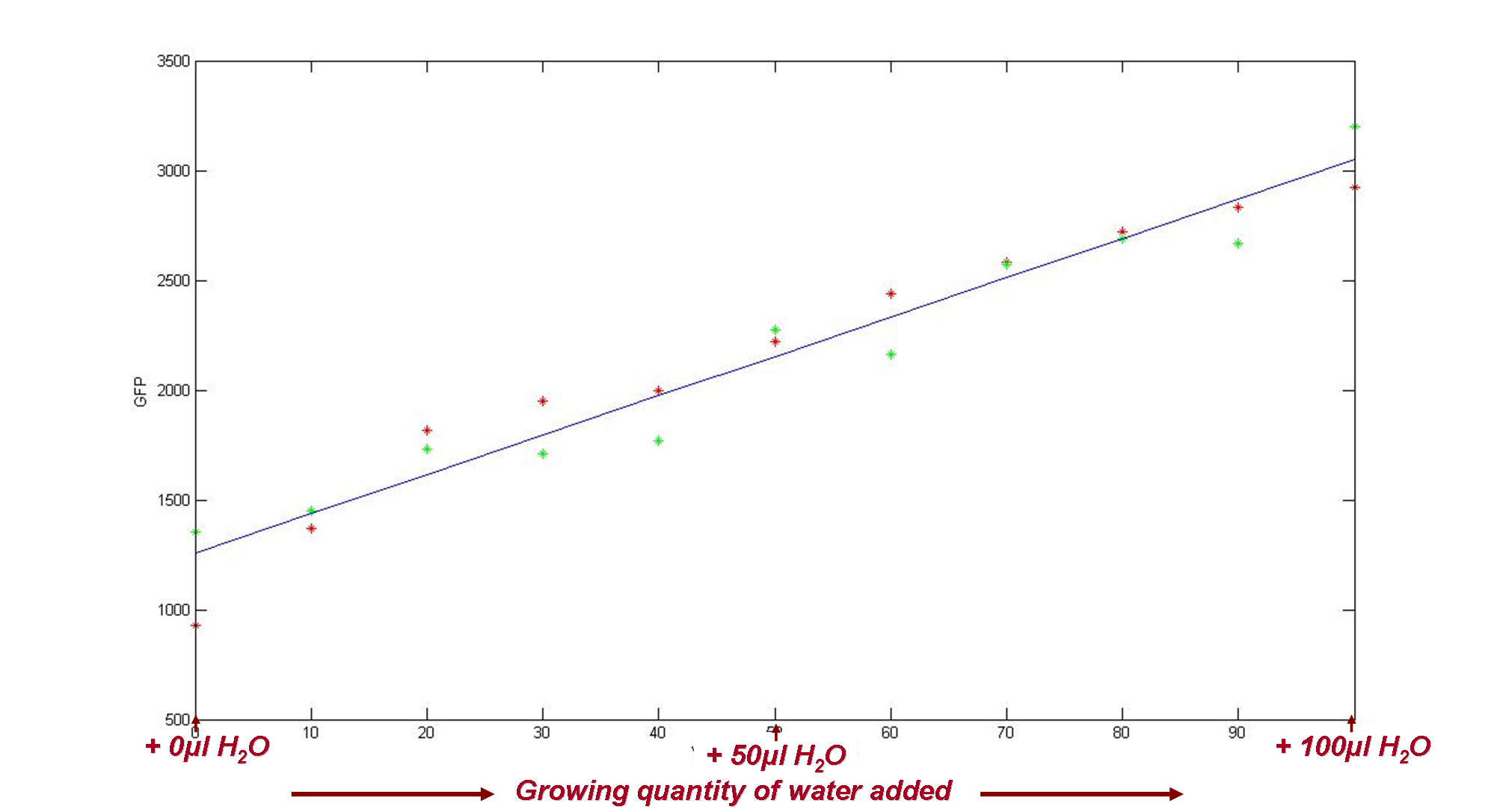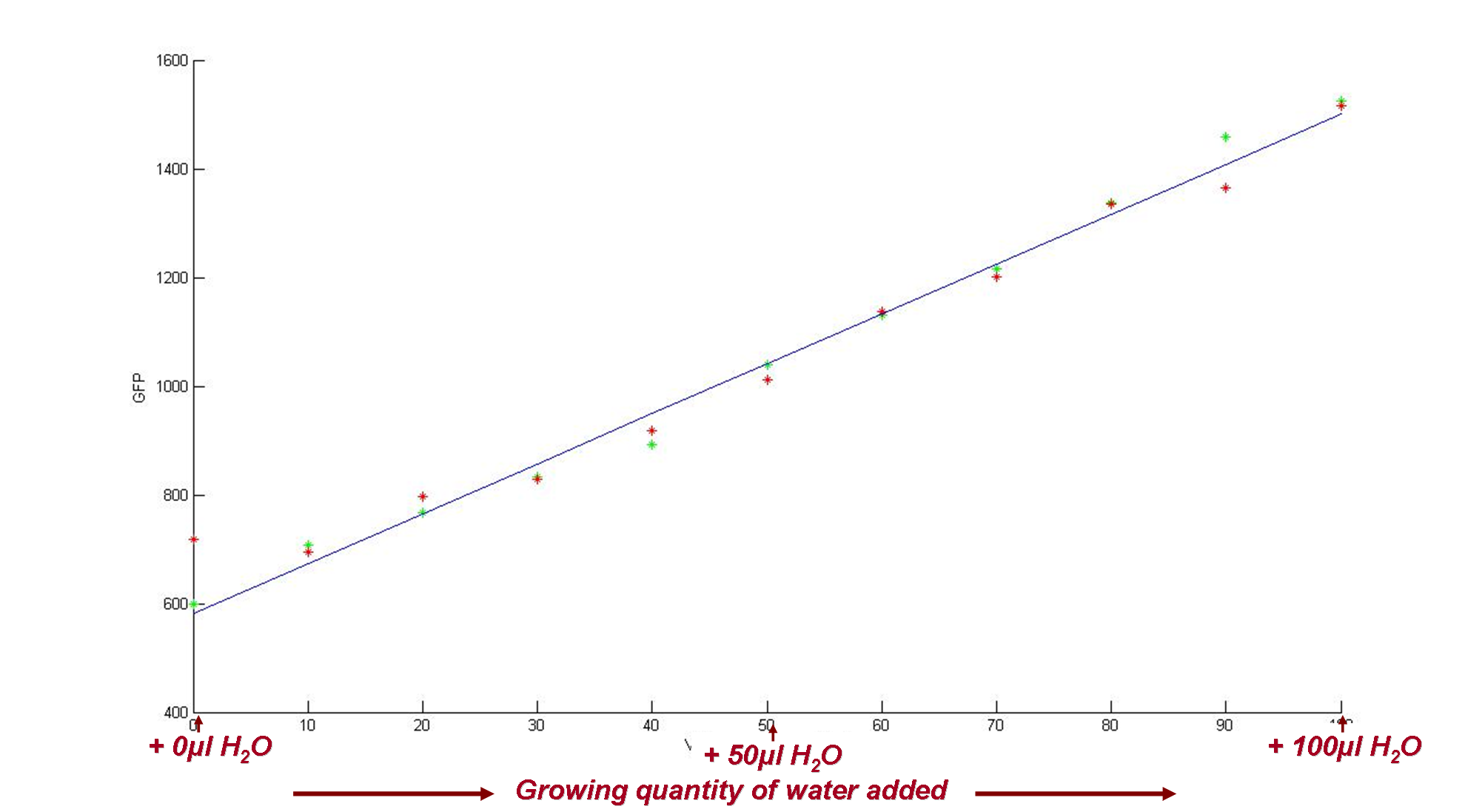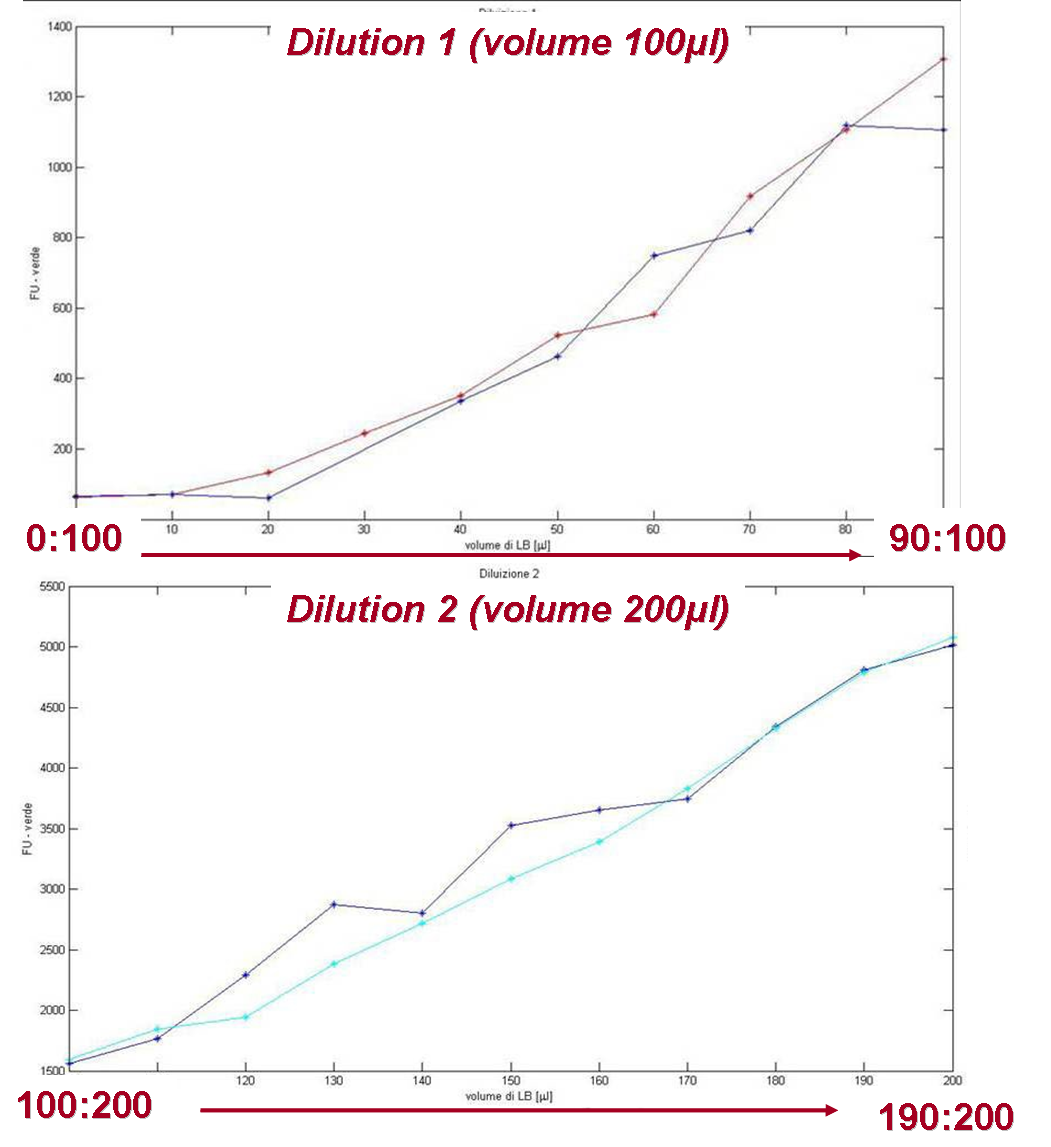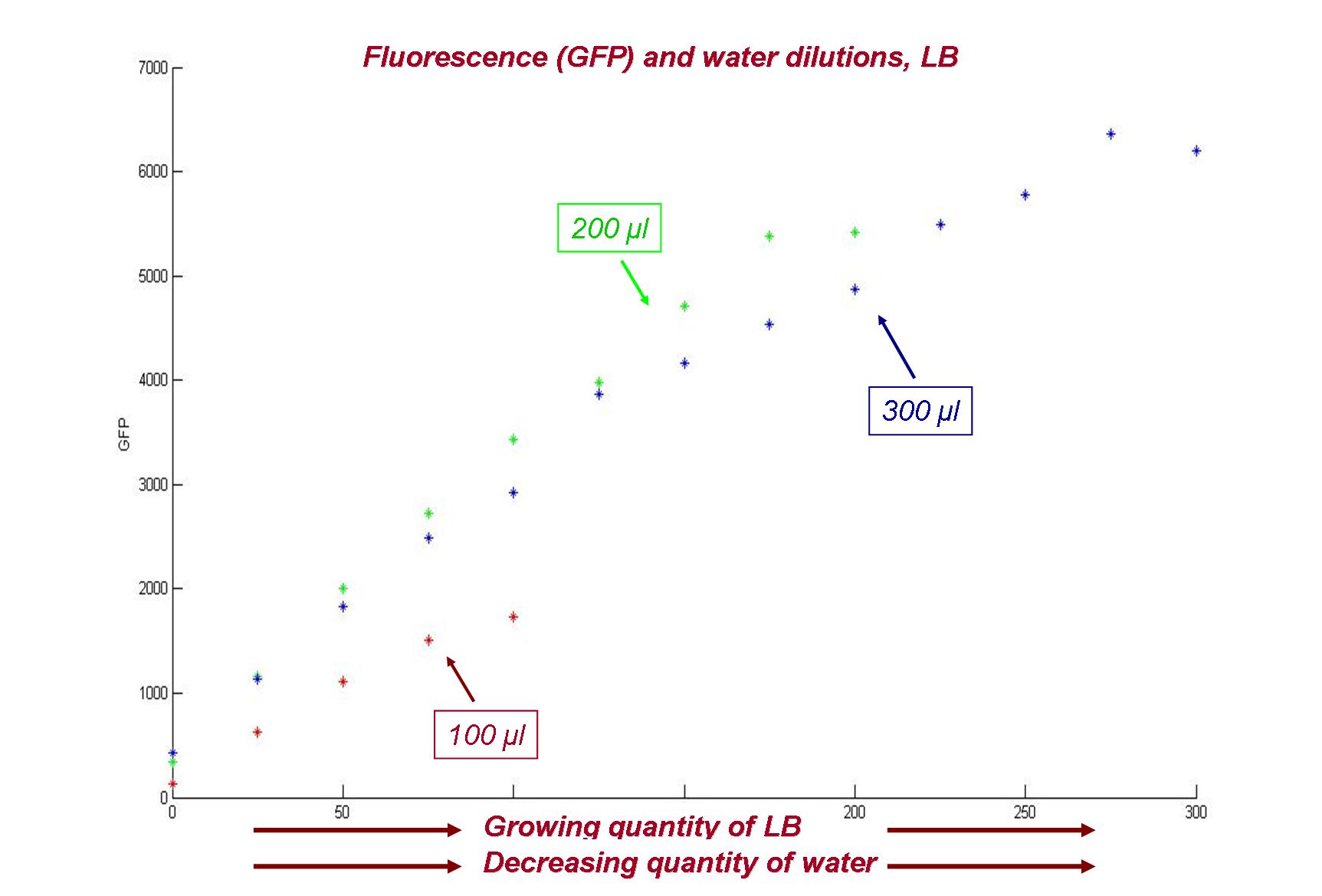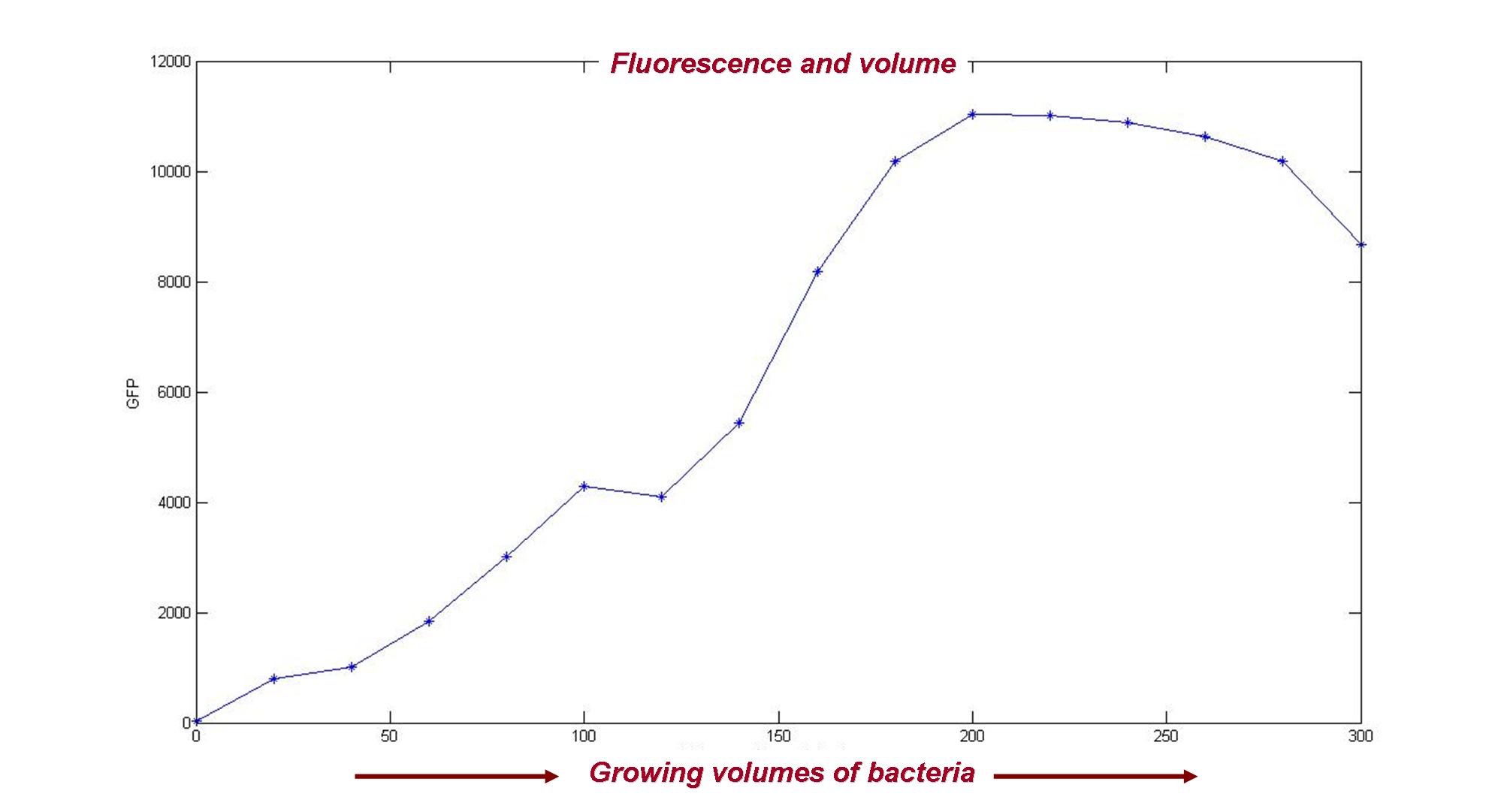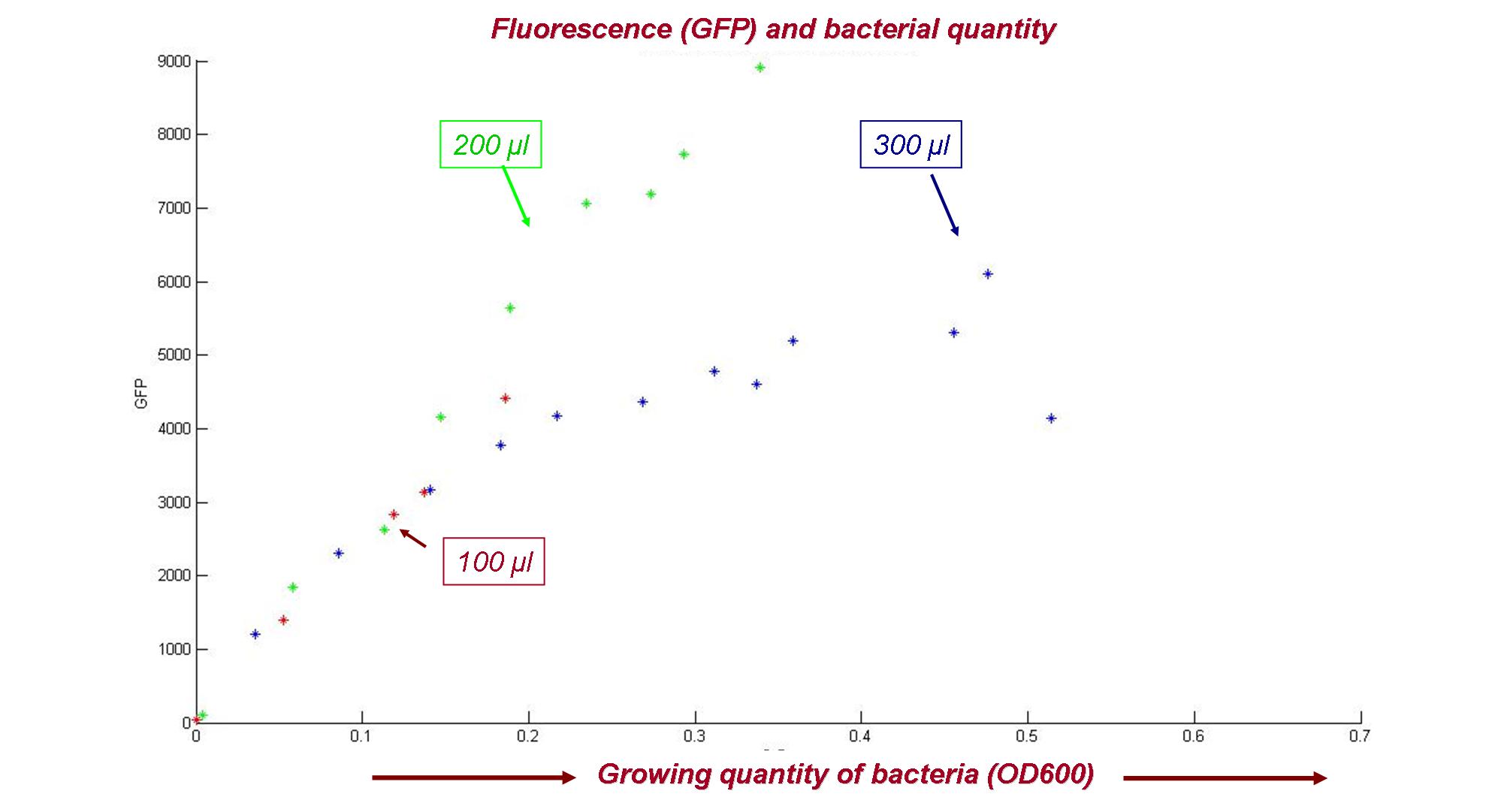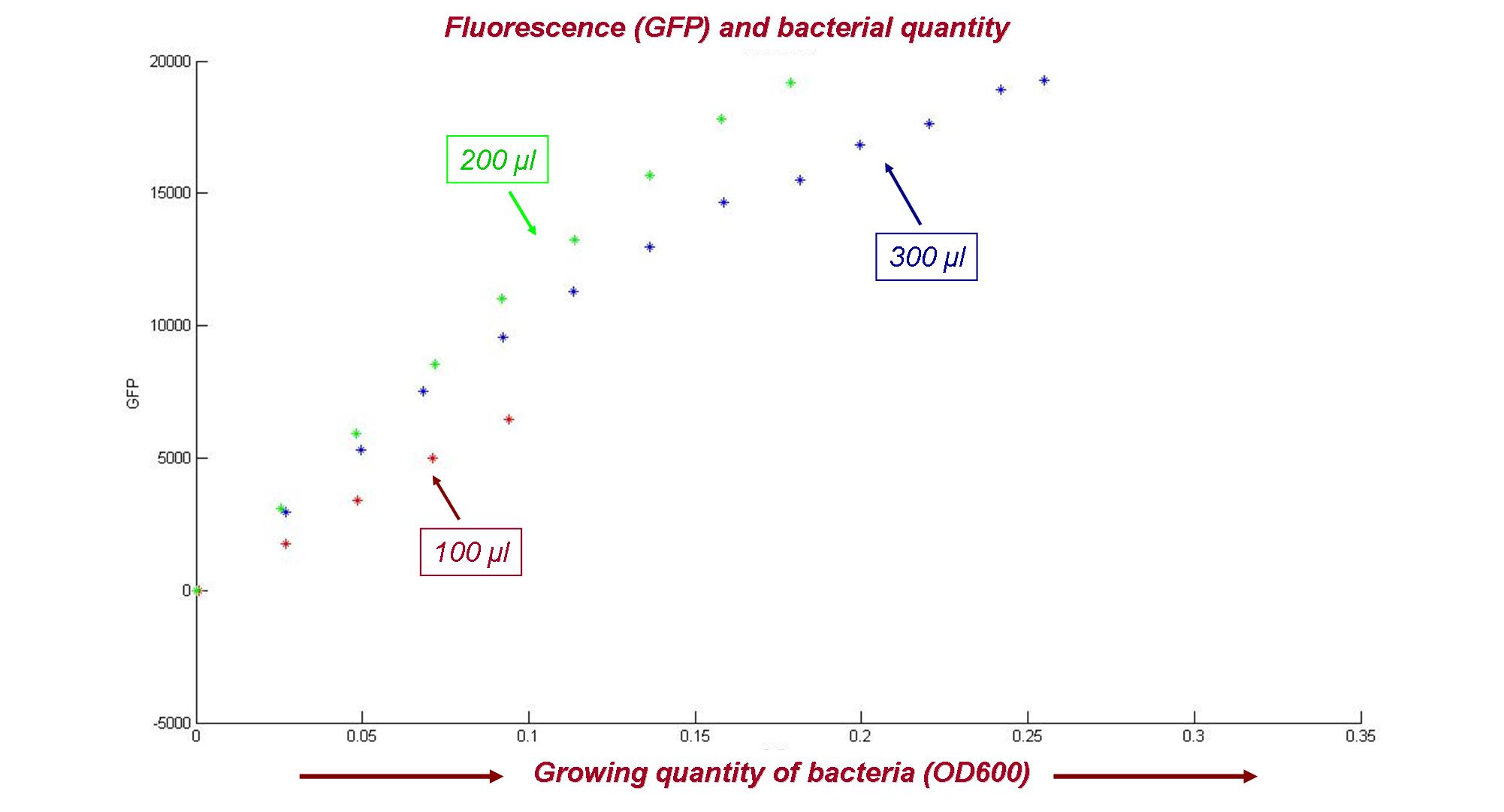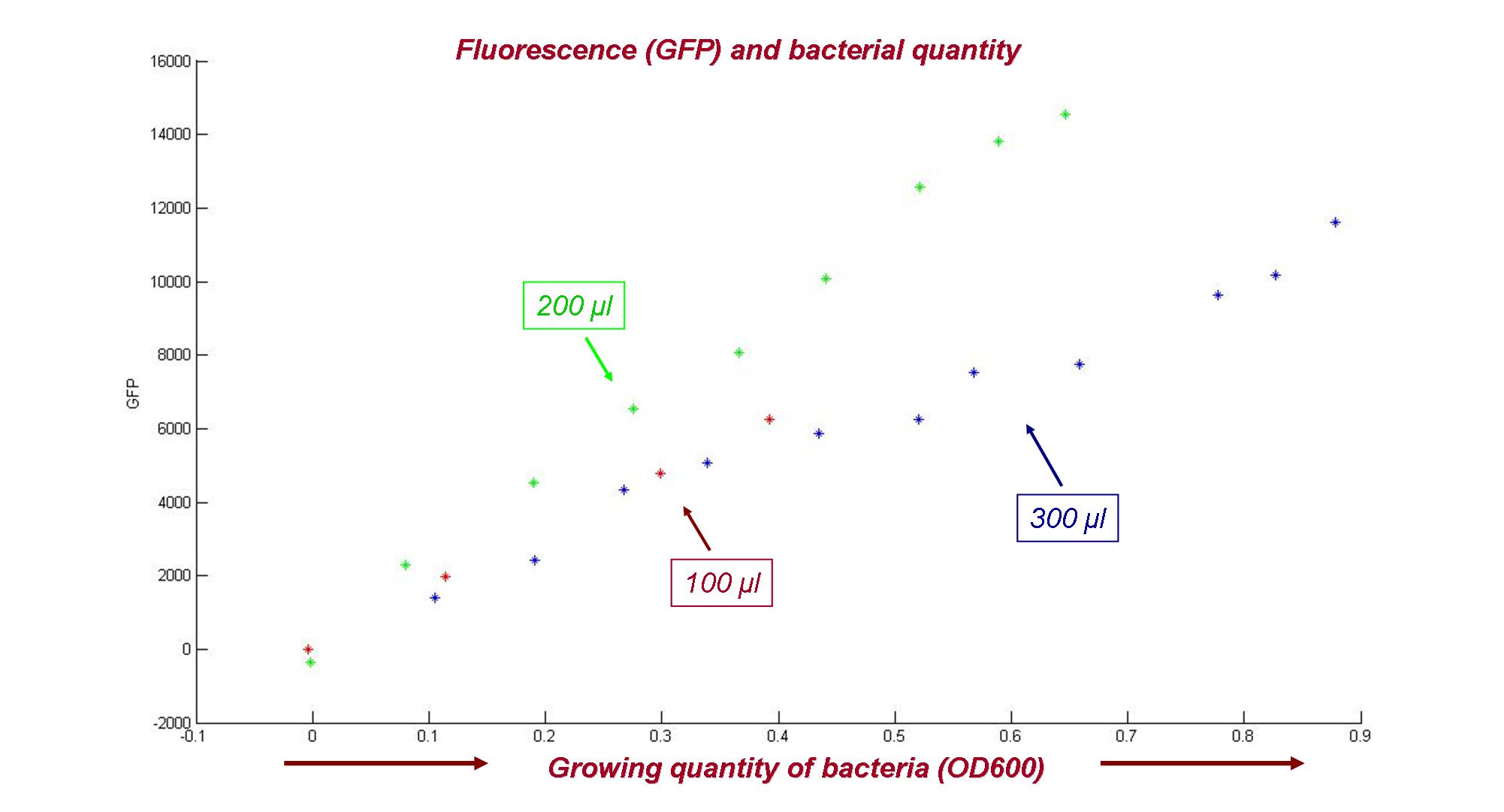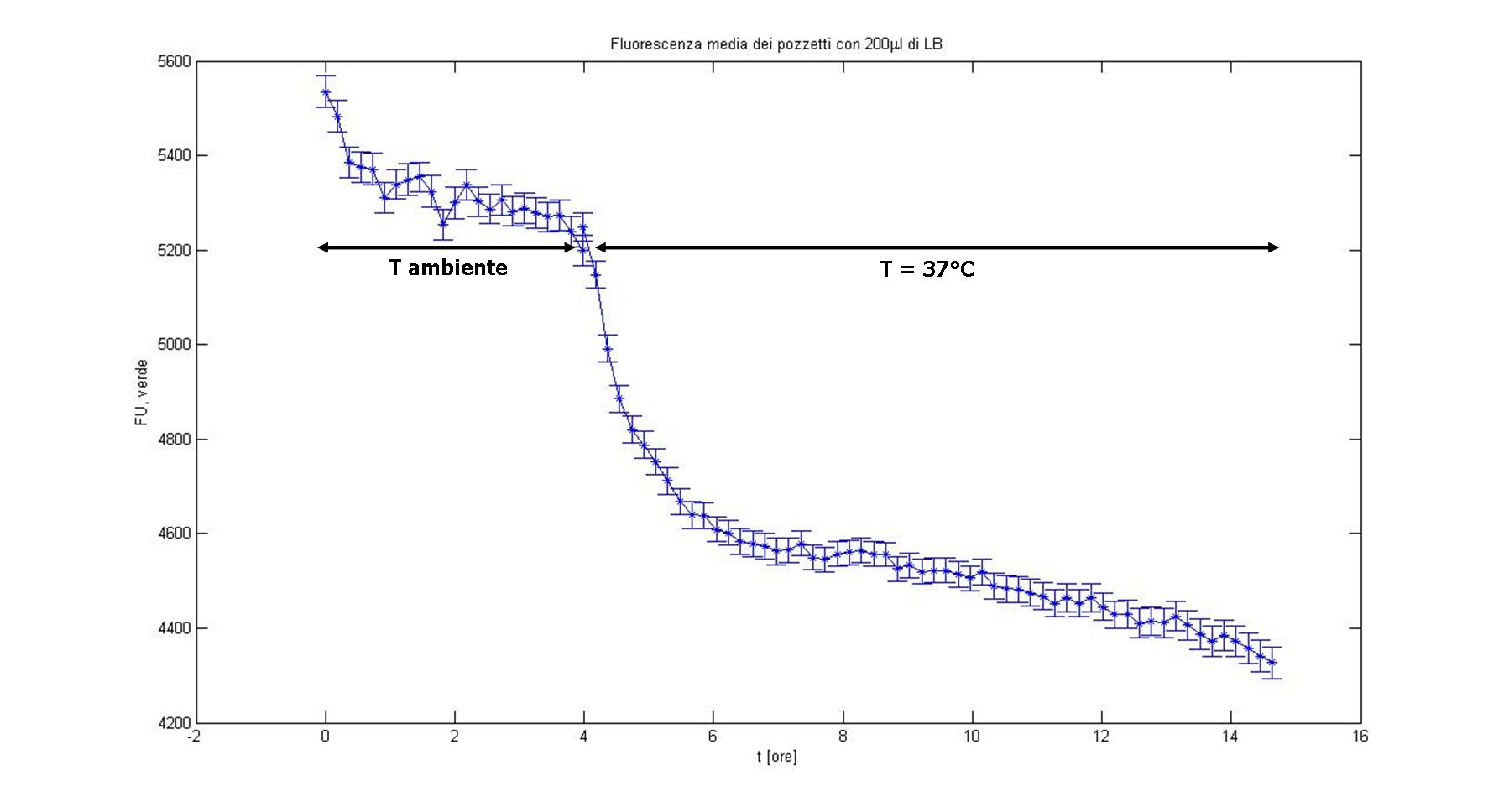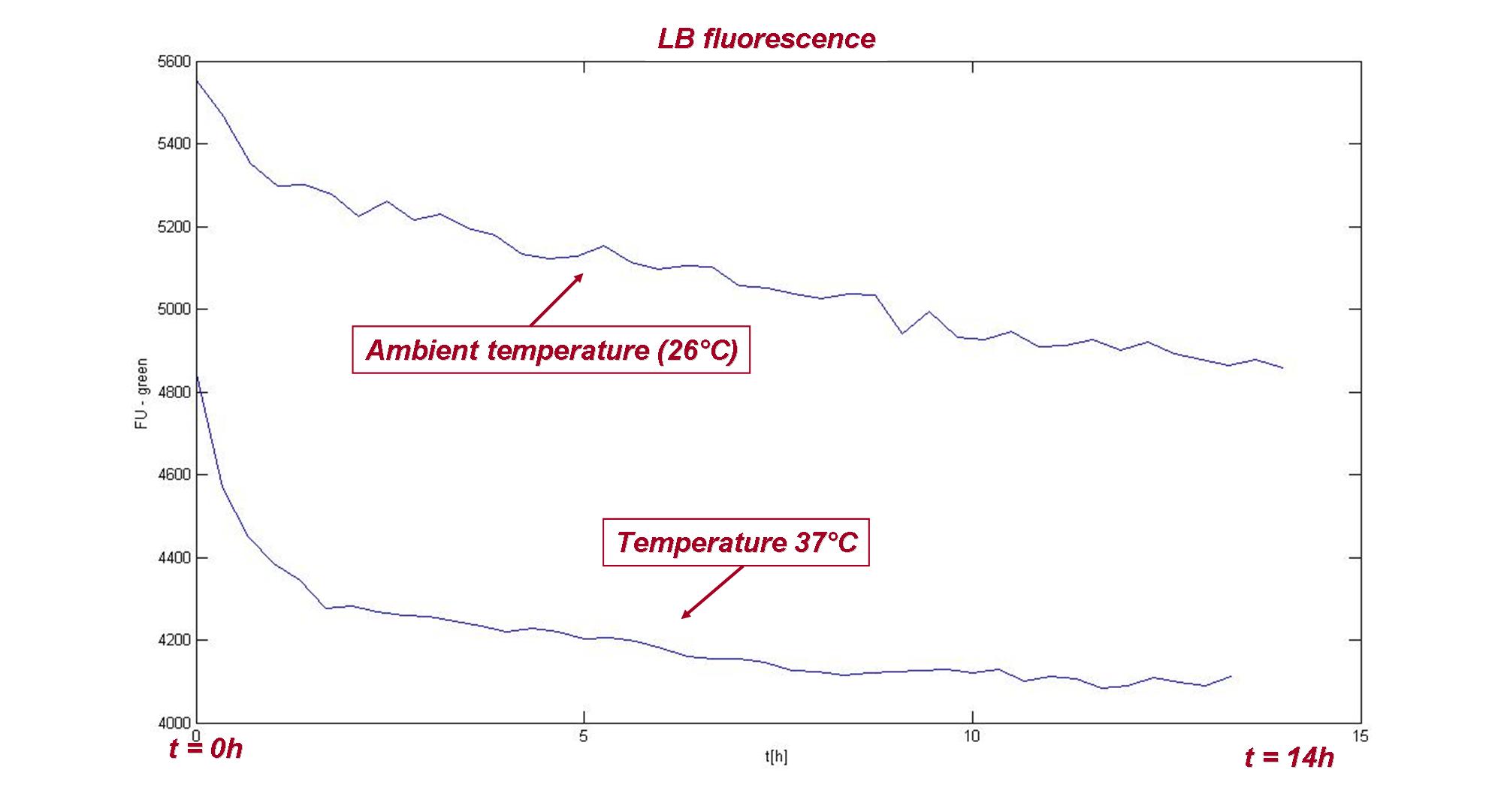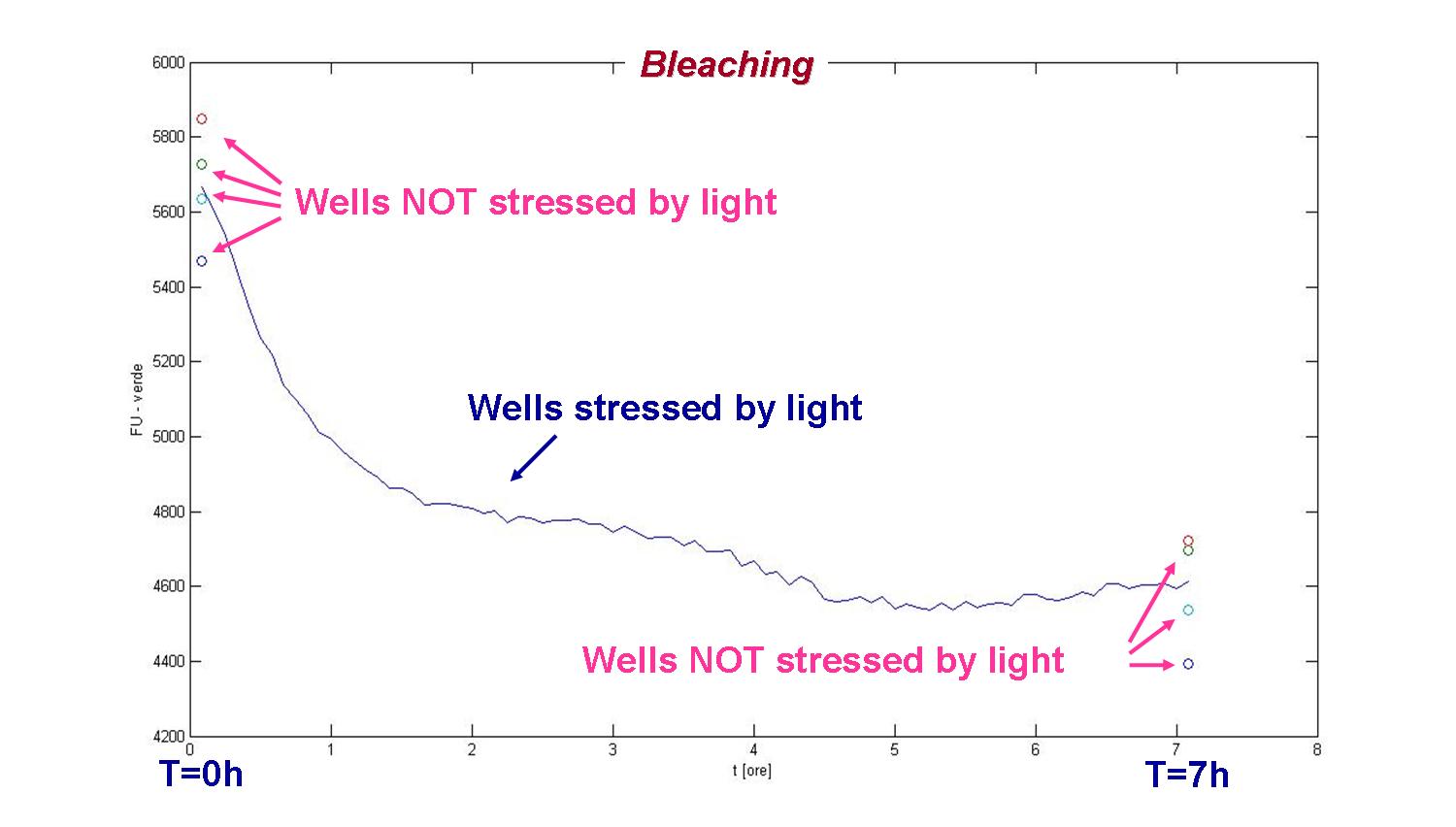Team:UNIPV-Pavia/Methods Materials/Fluorescence
From 2009.igem.org

|
|
|
Measurements - Fluorescence |
|
|
Fluorescence and water dispensationDifferently from the measures of absorbance, we find out that the dispensation of water in the well causes a significant amplification of the fluorescence signal, both for bacterial cultures and for simple liquid growth medium (in figure the results for a culture producing GFP). This amplification seems to be linear, and by fitting a linear regression model on the experimental data we estimate a coefficient of proportionality of 17.9 for bacterial colures and of 9.18 for LB medium. You can find more informations about the experiments at Download Protocol - Test n.9bis, 10/10/09 (bacterial colture), and Download Protocol - Test 17/10/09 (LB medium).
Fluorescence and dilutions in waterThe proportionality between fluorescence measurements (GFP and RFP) and different dilutions of LB was verified in two volumetric dilutions. This considerations has not to be read together with the results of the liner relationship between fluorescence and water dispensation, because even if different amounts of water in the well means different dilution of the colture, in that simulation we didn't work with costant volume in the well, as in this case we do (all the wells were filled with 100ul and 200ul). The first two measurements in the figure must not be taken into account because of the high measure's noise. You can find more information about the experiment at Download Protocol - Test n.18, 06/08/09.
In this second experiment we worked with three different total volumes (100, 200 and 300 μl) in the well, and we find out that this linear relation colud be considered independent of the volume (the 100 μl case is a little bit different, because it is subject to measure's noise). You can find more informations about the experiment at Download Protocol - Test n.20bis, 07/10/09.
Fluorescence and volumeThe relationship between fluorescence (both GFP and RFP) and volume of LB in the well present a non-linear characteristic, with a saturation of the fluorescent signal for volumes larger than 200ul. We observed this behaviour both for LB medium and fluorescent bacterial cultures. You can find more informations about the experiments at Download Protocol - Test n.14, 30/07/09, Download Protocol - Test 9bis 07/10/09 and Download Protocol - Test 17/10/09.
Fluorescence and dilutions in liquid growth mediumThis experiment was done in two different growth media, LB and M9 supplemented with glycerol, and in three different total volumes in the well, 100μl, 200μl and 300μl; a black plate was also used to repeat the experiment in LB. The hypothesis of proportionality between fluorescence measurement and culture's O.D. was verified with some restriction. We find out that working with total volumes larger than 200μl implicates some complicances because of a kind of saturation of the curve. We note that M9 medium (thanks to its low autofluorescence) is in general better than LB, and that the black plate is preferable to the transparent one for fluorescence measurements.
Temporal evolution of fluorescence measurementsWe observed a particular descending evolution in fluorescence measurements, with regard to the signal of the LB medium. At the beginning we thought that this behaviour depended in part on temperature, as it changed its evolution with temperature variations (see the figure below), and in part on evaporation of the volume in the well. You can find more informations about the experiments at Download Protocol - Test n.14, 30/07/09. Later we performed two others experiments to compare the evolution at ambient temperature and at incubation temerature (37°C), and we find out that the only significant difference is related to the first section of the curve (first 4 hours of incubation), where we observed a signal reduction of about 400 FU at ambient temperature, against 600 FU at 37°C, as you can see in the figure below. With regard to the second part of the curves, instead, the linear evolution is comparable. There must be another parameter involved in the phenomenon, but further studies must we done. You can find more informations about the experiments at Download Protocol - Test n.11bis, 07/10/09 and Test n.11, 21/07/09. Bleaching and autofluorescenceA simple experiment was made to understand if the temporal descending evolution of fluorescence measurement in LB described in Temporal evolution of fluorescence measurements is related to the bleaching phenomenon of the fluorescence signal or not. The results (see the figure) let us exclude this hypothesis. You can find more informations about the experiment at Download Protocol - Test "bleaching", 31/08/09.
|
 "
"

